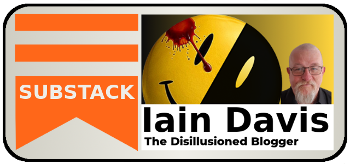In Part 1 we looked at the broad principles of micro and macro economics and now we will consider some aspects in more detail.
Microeconomics: This concerns itself with how consumers and businesses make decisions. For example microeconomics looks at why a consumer buys something and how much they are willing to pay for it. Similarly it looks at how businesses set the price of the goods or services that they sell to the consumer. By focusing on the economy at the individual, personal level it is possible to see how the economy is influenced by the decisions that the consumers make everyday.
This is often called a ‘bottom up’ analysis as consumer buying patterns dictate, to a large extent, how the wider economy performs. We often hear politicians and economists talk about ‘consumer confidence.’ What they are referring to is how positive the ordinary consumer is about their personal, financial health. If they have surplus income, are relatively confident about their financial future, then they are likely to spend more. When consumer spending picks up after a recession this can lead to a consumer led recovery (much like the one we are experiencing in the UK economy at the moment – April 2014.) However it needs to be noted that an increasing number of economists see major problems with this analysis (see below.)
In a sense consumer spending at a micro-economic level is supposedly driving change at the wider, macroeconomic level. The problem with this kind of recovery is that it doesn’t necessarily mean that the economy is more productive. Furthermore, if that consumer spending is recovering because people are using credit then what you actually have is a debt led recovery. And that can only ever lead to eventual economic collapse, the so called ‘boom and bust cycle.’
Utility: Central to microeconomics is the concept of ‘utility.’ A consumer in the modern economy has a lot of choice and often makes purchasing decisions based upon the benefit they think they will get from a product or service. This is its utility.
However, just as a consumer will give various products different degrees of utility they may also ascribe different levels of utility to the same product at different times. This is called ‘marginal utility.’
For example lets say you are really hungry. You may pay quite a high price for a burger. As a provider of burgers I may take advantage of this and charge you more because I know your demand is high. However once you have eaten the first you will be less hungry. You may still be hungry enough to want another but your ‘demand’ for it will be slightly lower. The utility placed upon the second burger is likely to be less than for the first. As the seller I may have to reduce the price in order to secure your purchase.
With each successive burger you buy (which we will call one unit) your demand for the next may reduce. Therefore I could look at the diminishing value you place upon each subsequent burger as the ‘diminishing marginal utility’ of the unit (burger.) However, whilst each burger is worth less to you than the last (and I may have to adjust my prices to get the next sale) you are still consuming more units. Therefore the ‘total utility’ is increasing with every one you buy but the rate of that increase is diminishing and will continue to do so until the rate is negligible.

Opportunity Costs: Another important aspect of microeconomics is that of ‘opportunity costs.’ When we make a decision to make or purchase something we are, by definition, rejecting an opportunity to do something else with our money and/or resources.
For example, using our burger analogy, when you decide to buy the burger you are equally deciding not to buy a banana instead. The immediate benefit you get from eating the burger is that the high salt and fat content satiates your appetite quickly. However the ‘opportunity cost’ of that unit is that you could have eaten a banana, which is more nutritious and gives longer lasting satisfaction.
In microeconomics the ‘opportunity cost’ reflects the comparative value of pursuing alternative strategies. For example if the price of wool suddenly decreases then the cost of the resources I need to make 10 jumpers will be relatively low. However the ‘opportunity cost’ may be that the money I spent on the cheap wool could have financed the purchase of a new knitting machine that would produce jumpers twice as fast. Therefore the ‘opportunity cost’ of the wool (even though it was a good deal) is reduced productivity.
Market Failure: This broadly refers to the relationship between the supply of goods and services, the demand for those goods and services and relationship these factors have on the competition within a market.
If demand for something is high & lots of businesses are competing to supply goods and services to meet that demand then competition is high. No single business can effect the price much because the market dictates what the consumer is willing to pay for it. With lots of competing sellers the consumer can simply go elsewhere if they don’t like either the price or the quality of the product. Similarly it’s a market that businesses can break into with relative ease, thereby keeping competition strong. This could be said to be a ‘perfect market.’
However one of the problems with fierce market competition is that there are inevitably winners and losers. Some businesses will out perform others. The wealthier companies may prosper whilst others go out of business. This won’t necessarily effect demand, especially if the goods or services in question are essential (such as fuel.) As time passes the stronger players get more and more powerful whilst the smaller ones fall by the wayside. Inevitably you reach a situation where perhaps only one or two companies control the whole market. Competition has been virtually eradicated. New businesses can not get into the market because they can’t compete with the dominant players. This is a ‘monopoly’ which allows the business that’s running the market to charge pretty much whatever it likes for the goods or services. Whilst the consumer has a need for those goods and services they have little choice but to accept the price demanded. This is a ‘market failure.’
The UK energy market is a possible example of such a failed market.
In Part 3 we take a closer look at macro economics.





Be the first to comment on "Difference Between Micro And Macro Economics – Part 2"